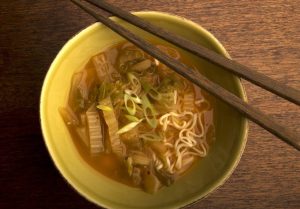Cancer Protective Diet
Cooking With Probiotics
Cooking with probiotics is unfortunately a bit of an oxymoron as high heat tends to kill the active organisms that make them such a nutritious bonus for our gut flora and fauna. For best probiotic effect, it is best to eat these foods without cooking them.That said, some research has shown health benefits from heat-treated probiotcs, so it’s possible that cooking does not undue all that bacterial goodness. It’s great... to know that there is more than one way to use and eat probiotic rich foods. Their tangy flavors make them indispensable pantry items as well as nutrient packed foods in their own right. Yogurt is the best known probiotic. It can be used in dressings – thick Greek yogurt can sub for mayo – plus it’s delicious stirred into soups, used to thicken sauces, or as a tart acidic marinade to help tenderize chicken and fish. Probiotic miso doesn’t need to be confined to the classic Japanese soup either. It’s pleasant saltiness and friendly organisms can be incorporated into salad dressings, or used in rubs for grilling veggies and meats. Tempeh can be grilled and sliced into curries and salads, while sauerkraut and kimchi can tastily slip their way into a grilled cheese sammie. Yum!

























